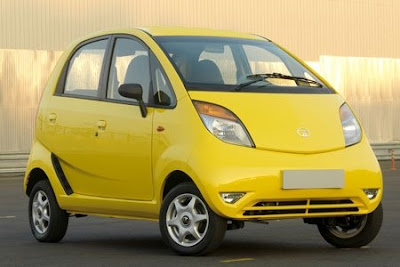
Tata is all set to launch the Nano next month in three petrol variants, standard, deluxe and luxury. According to industry sources, the diesel Nano, which will be launched next year, will also have three variants.
Dealer sources say that the top end luxury variant will have a range of features like HVAC, power window, central locking, tinted glasses, extended reflector, front and rear fog lamps, instrument cluster with trip metre, body colour bumper and door handles, door lock on the co driver side, slider with recliner, three spoke steering wheel and double stalk combiswitch. The deluxe version will have HVAC and tinted windows and the standard will have none of these.
In comparison, Maruti 800, the cheapest car on Indian roads, comes in three basic variants, LPG AC and standard and petrol AC and standard. At Rs 1.9 lacs ex-Delhi, MPI BSIII standard version is the cheapest car on Indian roads. The top-end AC limited edition version comes for Rs 2.19 lacs while the medium variant comes for Rs 2.11-2.13 lacs. All variants are available with immobilizer and in metallic and non-metallic color palettes.
Sources say only the base variant of Nano will cost Rs 1 lac. The deluxe and luxury variants will cost at least Rs 20,000-30,000 more. Much of what the Nano top-end version will offer is also available with the M800 AC version. That includes tinted glasses, outside rear view mirror, backdoor lock, reclining front seats and dual tone upholstery.
According to Tata Motors spokesperson, Nano has “a roomy passenger compartment with generous leg space and head room”. With a length of 3.1 meters, width of 1.5 meters and height of 1.6 meters, and adequate ground clearance, it can “effortlessly manoeuvre on busy roads in cities as well as in rural areas. Its mono-volume design, with wheels at the corners and the powertrain at the rear, enables it to uniquely combine both space and maneuverability,” he added.
Like M800, Nano will sport a multi-point fuel injection engine. “This is the first time that a two-cylinder gasoline engine is being used in a car with single balancer shaft. The lean design strategy has helped minimise weight, which helps maximise performance per unit of energy consumed and delivers fuel efficiency of about 20 km to a litre. We withhold sharing any further details at this stage,” said the spokesman.
No comments:
Post a Comment